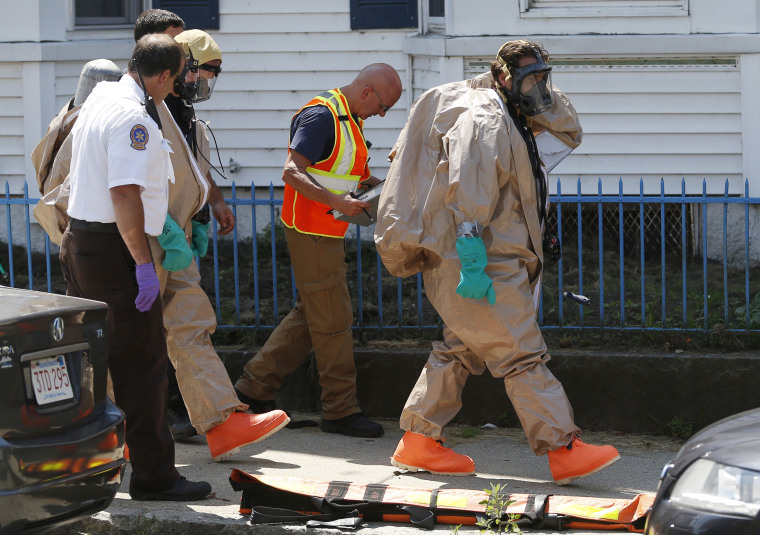New synthetic opioids are killing more people than ever before, with more than half of all opioid overdose deaths caused by the powerful, lab-made drugs, federal officials said Wednesday.
The Centers for Disease Control and Prevention issued a Health Alert Network warning about the increased supply of the illicit drugs, which are many times stronger than fentanyl, the prescription painkiller.
“The dramatic rise in the supply of illicitly manufactured fentanyl and fentanyl analogs has been mirrored by an equally dramatic rise in deaths involving synthetic opioids other than methadone, a category which includes fentanyl and fentanyl analogs,” the CDC said in its alert.
Death rates doubled between 2015 and 2016, the CDC said. “More than 55 percent of opioid overdose deaths occurring nationally in the 12 months ending November 2017 involved synthetic opioids, accounting for more than 27,000 overdose deaths,” the CDC said in the health alert, citing preliminary numbers.
That’s up from 20,000 overdose deaths from synthetic opioids in 2016.
People who overdose on the synthetics may need multiple doses of naloxone, the drug that can reverse an overdose, the CDC added.
The new drugs include carfentanil, which is 100 times more potent than fentanyl, the CDC said. Another is 3-methylfentanyl, which is four times as powerful. Deaths from these drugs nearly doubled from 2016 to 2017, the CDC said.
Other illicit synthetic opioids include furanylfentanyl and acrylfentanyl. “Finally, drug submissions testing positive for a synthetic illicit opioid known as U-47700, first encountered by the DEA in 2016, increased from 533 submissions in 2016 to 1,087 during January–June, 2017,” the CDC said in the alert, referring to the Drug Enforcement Administration.
Some of the new drugs may not be detected by standard tests, and coroners and medical examiners may need to use a mass spectrometer to detect the substances.
And they’re often being used to cut other drugs, such as cocaine, the CDC said.
The U.S. is suffering through a terrible epidemic of opioid abuse. Opioids, including prescription opioids and heroin, killed 42,000 people in 2016, the CDC says. Opioid overdose deaths are so bad that they have helped drive down U.S. life expectancy.
Starting in 2016, most deaths were caused by the street synthetics. That continued into 2017, the CDC said. “This 12-month sum of synthetic opioid overdose deaths exceeds the total number of all opioid overdose deaths in 2013, when deaths involving synthetic opioids first began to climb,” the CDC said.
“Ohio alone reported more than 1,700 opioid overdose deaths testing positive for fentanyl analogs during July 2016–June 2017, with more than 1,100 of those deaths involving carfentanil.”
Emergency responders and physicians may not know that people overdosing on the synthetics may need extra care, the CDC said.
“Orally ingested counterfeit pills laced with fentanyl or fentanyl analogs may require prolonged dosing of naloxone in the ED hospital setting due to a delayed toxicity that has been reported in some cases," the CDC said


